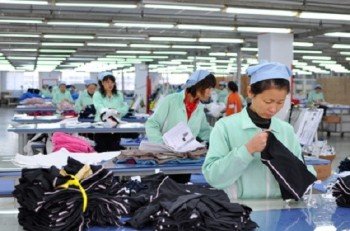
I. Introduction
When it comes to managing backpack quality control in international trade, safety is the top priority. Ensuring that backpacks meet required quality standards is crucial to preventing potential injuries and legal issues for manufacturers and traders. However, the consequences of poor-quality backpacks extend beyond safety concerns. They can also result in financial losses through recalls or returns, as well as damage to a company’s reputation, potentially leading to loss of customers and business opportunities. It’s clear that prioritizing backpack quality control is essential for both safety and success in the international market.
Navigating the international trade landscape can be a tricky business. With language barriers, distance and logistics, human error, and counterfeiting and fraud to contend with, ensuring a high level of quality control can be a real challenge. Miscommunication and misunderstandings can often arise when dealing with non-native speakers while managing quality control across multiple locations can be complex, especially when transportation and delivery issues come into play. Human inspectors are often used for quality control, but even they are susceptible to making mistakes or missing issues during inspections. On top of this, counterfeit and substandard products can be difficult to detect, leaving companies vulnerable to fraud. It’s a tough world out there for international traders, but with the right strategies in place, it’s possible to overcome these obstacles and ensure top-quality products every time.
II. Pre-Production Quality Control

Pre-production quality control is like a backpack’s armor, guarding it against any potential quality slip-ups. It’s the process of examining the raw materials and components with a keen eye before their transformation into finished products. Why is this crucial you might ask? Because it entails making sure that every aspect of the backpack meets the required quality standards.
Manufacturers and traders inspect everything from the fabrics to the zippers to confirm that they meet their high-quality standards. They test for strength, durability, and other important properties to ensure the backpacks will hold up to wear and tear. If anything doesn’t make the cut, it’s tossed out or replaced to keep the end product up to par. In short, a lot goes into ensuring your backpack does its job as well as it can.
Key steps
- Specification review: The manufacturer or trader should review the specifications and requirements for the backpacks to ensure that all materials and components meet the required standards.
- Raw material inspection: The materials, such as fabric, zippers, and hardware, should be inspected for quality and compliance with the required standards. This may involve testing for strength, durability, and other properties.
- Sampling: The manufacturer or trader should take samples of the materials and components to be used in the backpacks for further testing and analysis.
- Testing: The materials and components should be tested for quality and compliance with the required standards. This may involve testing for tensile strength, tear resistance, color fastness, and other properties.
- Documentation: All inspection and testing results should be properly documented and stored for future reference.
- Corrective actions: If any materials or components do not meet the required quality standards, corrective actions should be taken to ensure that the issue is addressed before production begins.
III. During Production Quality Control

During production quality control is a process that involves monitoring the quality of backpacks as they are being manufactured. This step is essential to ensure that the final product meets the required quality standards and is free from defects.
By keeping a watchful eye on the production of backpacks, manufacturers and traders can nip defects in the bud and prevent them from blossoming into bigger issues. This foresight helps save time and resources that would be otherwise spent on backtracking or reworking faulty products. Even more importantly, it can prevent customer dissatisfaction caused by the faltering quality of a product. Additionally, during production quality control helps to maintain the product’s quality and design consistency, ensuring that each backpack that rolls off the assembly line meets the required standards.
Key steps
- In-process inspections: Inspectors should conduct regular inspections of the production line to ensure that the manufacturing process is following the approved procedures and quality standards. This may include verifying the accuracy of machine settings and checking the quality of the materials and components being used.
- Sample testing: The inspectors may take samples of the backpacks at various stages of production and perform tests to verify that they meet the required quality standards. This may involve testing for strength, durability, color fastness, and other properties.
- Visual inspections: Inspectors should visually examine the backpacks for any defects, such as loose threads, incorrect stitching, or other quality issues. This should be done on a regular basis to ensure that any issues are caught early and addressed.
- Dimensional checks: Inspectors should measure the dimensions of the backpacks to ensure that they meet the required size and weight specifications.
- Random inspections: Inspectors may conduct random inspections of the finished backpacks to verify that they meet the required quality standards. This can help ensure that any defects or quality issues are caught before the backpacks are shipped to customers.
- Documentation: All inspection and testing results should be properly documented and stored for future reference.
IV. Post-Production Quality Control

The last step in backpack production is just as critical as the first. Quality control checks ensure that each backpack is up to snuff and ready for action. It’s like a final exam before the backpacks hit the shelves. This means customers can trust that they are receiving a product that is built to last and is free from any pesky defects.
Key steps
- Visual inspection: Inspectors visually examine the finished backpacks for any defects, such as loose threads, incorrect stitching, or other quality issues.
- Dimensional checks: Inspectors measure the dimensions of the backpacks to ensure that they meet the required size and weight specifications.
- Functionality testing: Inspectors may test the functionality of the backpacks, such as zippers, straps, and pockets, to ensure that they are working properly.
- Random inspections: Inspectors may conduct random inspections of the finished backpacks to verify that they meet the required quality standards.
- Packaging inspection: Inspectors may also inspect the packaging of the backpacks to ensure that they are properly labeled, packaged, and ready for shipment.
V. Transportation and Delivery

When it comes to ensuring top-notch backpack quality, transportation and delivery are major players in the game. The final leg of the production process is crucial for safeguarding backpacks from harm or defects that can arise during transit. This phase sets the stage for every backpack’s grand debut and can either make or break a brand’s reputation. Avoiding potential transportation pitfalls can save manufacturers and traders from revenue losses and maintain customer confidence.
Key steps
To ensure that backpacks are transported and delivered safely and securely, it is important to take certain steps, such as:
- Proper packaging: Backpacks should be properly packaged to protect them from damage during transportation. This may involve using protective materials such as bubble wrap, foam, or other cushioning materials.
- Secure transportation: Backpacks should be transported in secure and stable vehicles that can protect them from damage due to road conditions, weather, or other hazards.
- Proper handling: Backpacks should be handled carefully during loading and unloading to avoid any impact or abrasion that could damage them.
- Tracking and monitoring: The transportation and delivery process should be tracked and monitored to ensure that backpacks are delivered on time and in the right condition.
VI. Conclusion
In conclusion, backpack quality control is essential in international trade to ensure that the final product meets the required quality standards and design specifications. The quality control process involves pre-production, during-production, and post-production inspections, as well as transportation and delivery monitoring. Each stage plays a critical role in ensuring that the backpacks are manufactured to the highest quality standards and are delivered to customers in the same condition as they were when they left the factory.
With the increasing demand for high-quality backpacks, it is important for manufacturers and traders to implement a robust quality control process that covers all stages of production, as well as transportation and delivery. By doing so, they can not only meet the expectations of their customers but also build trust and loyalty, which are essential for success in the highly competitive backpack industry.


